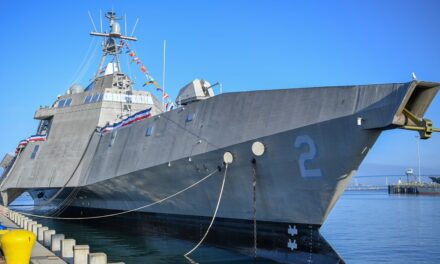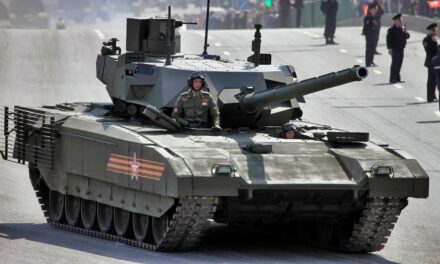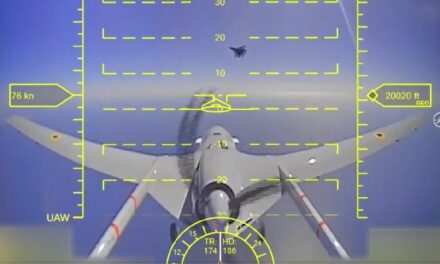We support our Publishers and Content Creators. You can view this story on their website by CLICKING HERE.
Wrong Weapon?: The Ukrainian Army is facing challenges with the M1 Abrams tank in the Donbas region, citing maintenance difficulties, susceptibility to drones, and issues with gun effectiveness against buildings.
-Retired U.S. Lt. General Mark Hertling attributes these problems to operator error and insufficient training rather than flaws in the tank’s design.
-The Abrams has proven its effectiveness in past conflicts, but its reliance on advanced maintenance and its visibility on modern battlefields may complicate its use in Ukraine.
-Training and integration with supporting assets like the Bradley Fighting Vehicle could be key to overcoming these issues.
M1 Abrams Tanks Having Difficulty in Ukraine
It doesn’t make sense. The Ukrainian army has taken to the Bradley Fighting Vehicle well by using these armored personnel carriers to succeed against Russian forces.
But Ukrainian tank crews are struggling with their M1A1 Abrams tanks, the M1 Abrams variant Kyiv is now using against Russia. They believe that the Abrams is not suited for modern warfare in the Donbas region. The tanks are reportedly challenging to maintain, spare parts are hard to acquire, and the tank must be kept in the rear for fear it will be destroyed.
M1 Abrams Tank: What’s the Problem in Ukraine?
Ukrainians also believe that condensation from the humid, foggy, and rainy weather obscures instruments onboard. They have complained that the M1 Abrams gun is not effective against buildings and that the tank is susceptible to drone attacks.
One U.S. General Disagrees
One retired American general who spent his career in the U.S. Army armor branch and who has extensive experience with the Abrams is having none of it.
“That’s BS,” Lt. General Mark Hertling exclaimed to CNN this summer. “[I] know for a fact having fired these vehicles and having been a tanker all my life that this is a crew that is not either selecting the right weapon system or isn’t maintaining their tanks very well.”
M1 Abrams Tank. Image Credit: U.S. Army.
Hertling asserts that since the Abrams was created with European conditions in mind, operator error must be blamed rather than the weapons platform itself. The Abrams is built explicitly for attacking Russian tanks and armored personnel carriers, and something else must be amiss in Ukraine. Hertling believes the tank is quite capable of succeeding in the Donbas.
Not a Good Start for the Abrams
The United States announced they would send 31 M1A1 Abrams tanks to Ukraine in January of 2023, which cost $10 million each. They arrived in October of that year. The Ukrainians pulled the M1 Abrams tanks from the frontlines this spring, complaining that they are easy to spot and destroy by Russian surveillance and attack drones. Five of the Abrams models have been knocked out of battle as of April, according to the Associated Press. They are now in the rear.
Maybe It Is a Lack of Training in Maintenance and Combat
Ukraine’s army must be frustrated by the difficulty in keeping the Abrams turbine engine operating efficiently and correctly. It usually takes four to five months for new American armored crew members to be proficient in tactics, techniques, and procedures on the Abrams. It is not clear if Ukrainian soldiers received the same type of intense training U.S. Army soldiers get on the tank.
The bigger problems are maintenance and spare parts. An Abrams requires an especially adept hand at maintaining battle readiness, and Ukrainian soldiers likely have not mastered the intricacies.

An M1A2 Abrams SEP V2 main battle tank, assigned to Cold Steel Troop, 1st Squadron, 11th Armored Cavalry Regiment, fires a M865 target practice cone stabilized discarding sabot with tracer on December 9, 2021, at the National Training Center and Fort Irwin training area.
More About the M1A1 Abrams
The M1 Abrams is known for its effective armor, crew protection, speed, and all-around combat ability. It proved its mettle in Operation Desert Storm and the Second Gulf War, and it is considered one of the best, if not the best, tanks in the world.
However, it is more specified for force-on-force armored warfare and was designed before drones became such a significant factor on the 21st-century battlefield.
The Abrams turret can turn 360 degrees in nine seconds. It should be fine rolling around trenches in Ukraine since it can manage obstacles four feet high and travel through a ditch that is nine feet wide. It can reach 45 mph on paved roads and accelerate to 20 mph from a complete stop in six seconds.
The M1A1 Abrams weighs around 55 tons so there is always a risk it could become stuck in the mud in Ukraine. Abrams tanks use a four-man crew. The original Abrams M1 had a 105mm gun but this was replaced by a 120mm smoothbore model on the M1A1 and M1A2. The Abrams is produced by General Dynamics.
Is the Abrams Suited for Modern Warfare?
The trouble that the Abrams is having in Ukraine is a mystery. Is it because of flaws in the armor, or is it operator error?
I side with Lt. General Hertling and blame inexperienced and bumbling crew members. Yes, overhead attacks from drones are a problem, and the Abrams is easy to spot, but there is no problem with the instruments or the gun. There is a report that a Ukrainian Abrams crew fired 17 rounds into a building only to find that it was still standing after the barrage. That is probably an exaggeration, or the Ukrainian soldiers were using the wrong ammunition.

US Army M1 Abrams Tank. Image Credit: Creative Commons.
Ukraine must find a way to use the M1 Abrams with the Bradley Fighting Vehicle and have dismounted cavalry scouts spot drones and enemy vehicles before they attack. Armored maneuver warfare takes years of training to execute effectively, and Ukraine does not have that kind of experience with the Abrams. But look for that to change and expect a return to the front lines for the celebrated tank. It is too good to keep in reserve.
About the Author: Dr. Brent M. Eastwood
Brent M. Eastwood, PhD is the author of Don’t Turn Your Back On the World: a Conservative Foreign Policy and Humans, Machines, and Data: Future Trends in Warfare plus two other books. Brent was the founder and CEO of a tech firm that predicted world events using artificial intelligence. He served as a legislative fellow for U.S. Senator Tim Scott and advised the senator on defense and foreign policy issues. He has taught at American University, George Washington University, and George Mason University. Brent is a former U.S. Army Infantry officer. He can be followed on X @BMEastwood.

 Conservative
Conservative  Search
Search Trending
Trending Current News
Current News 





